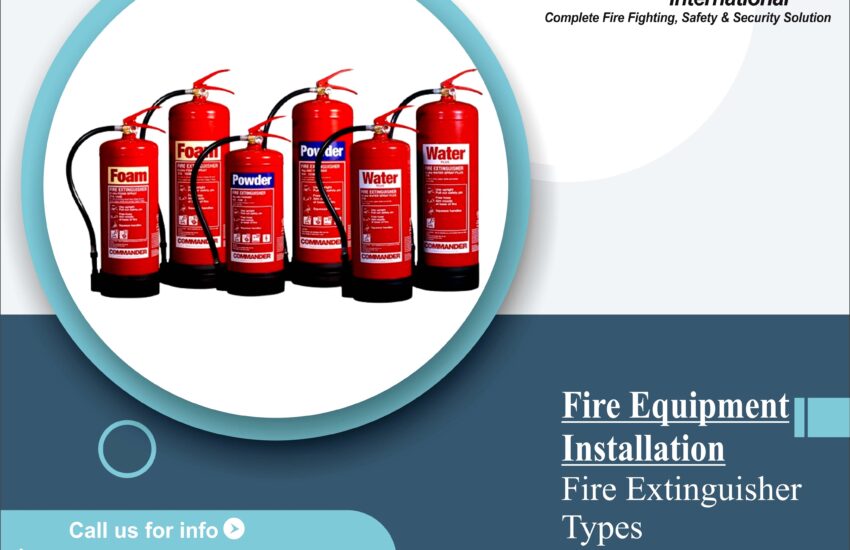Fire Extinguisher Types Choosing the right type of fire product is essential for protecting people, property, and business continuity. Many options are available in the market, and while some may seem cost-effective upfront, they often require expensive service parts that are only available from the original manufacturer. To avoid hidden costs, it’s best to invest in fire extinguishers that are low-maintenance, widely supported, and fit for your specific fire risks.
| Water Fire Extinguisher: Water Fire Extinguishers Best for: Class A fires involving flammable solids such as wood, paper, textiles, and cardboard. Water extinguishers are one of the most common fire extinguisher types, especially in offices, schools, and commercial buildings. These units discharge a stream of water to cool and suppress flames. When to Use: Fires involving paper, wood, cloth, and other organic materials. When NOT to Use: Electrical fires (water conducts electricity and poses a shock risk). Flammable liquids, gases, or cooking oils (Classes B, C, and F). Ideal Environments: Warehouses, offices, schools, and residential areas with high Class A fire risks. | 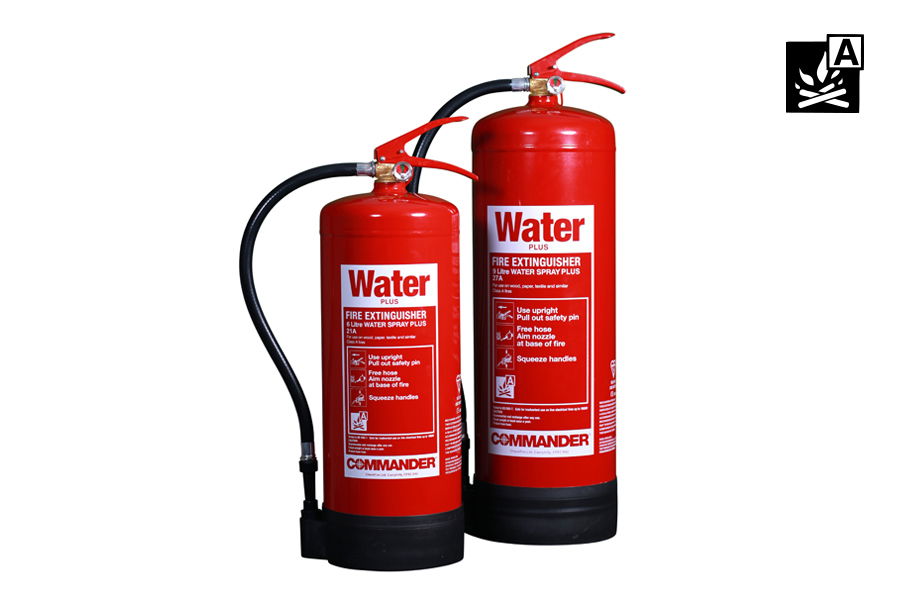 |
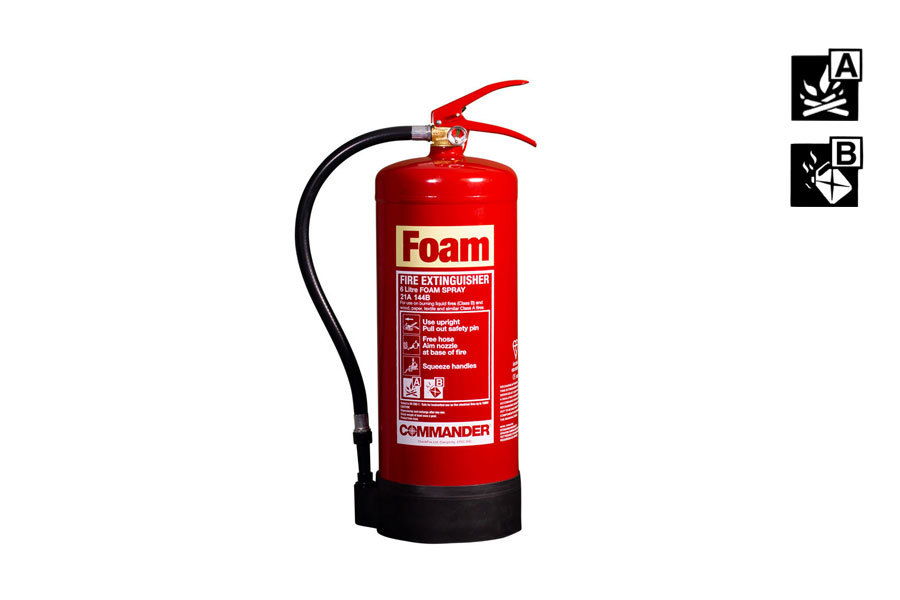 | Foam Fire Extinguisher: Foam Fire Extinguishers Best for: Class A and B fires, including flammable liquids and solids. Foam extinguishers create a blanket over burning liquids, cutting off the fire’s oxygen supply. They’re highly effective in environments with risks from both solids and flammable liquids. When to Use: Fires involving wood, paper, petrol, and paints. When NOT to Use: Fires involving cooking oils (Class F). Fires with live electrical components unless specified as safe. Ideal Environments: Offices, garages, healthcare facilities, educational institutions, and fuel storage areas. |
| Dry Powder Fire Extinguisher: Dry Powder Fire Extinguishers Best for: Class A, B, and C fires (solids, liquids, and gases), and electrical fires under 1000v. Often referred to as ABC fire extinguishers, these are multi-purpose units that interrupt the chemical reactions happening in a fire. They are versatile but not suitable for every scenario. When to Use: Fires involving wood, petrol, gas leaks, and live wires (under 1000v). When NOT to Use: Fires involving cooking oil (Class F). Fires around sensitive electronics due to powder residue. Ideal Environments: Workshops, fuel stations, mechanical rooms, and warehouses. | 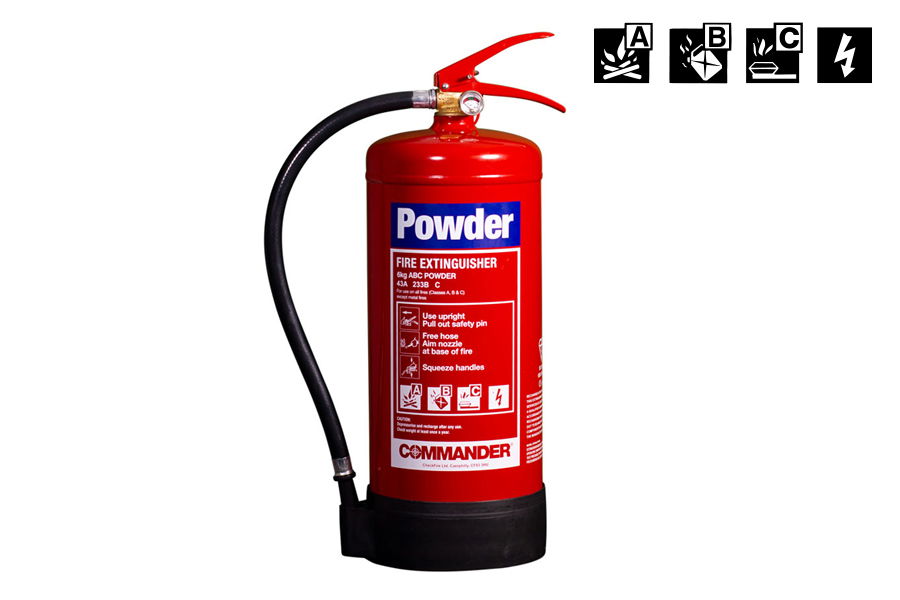 |
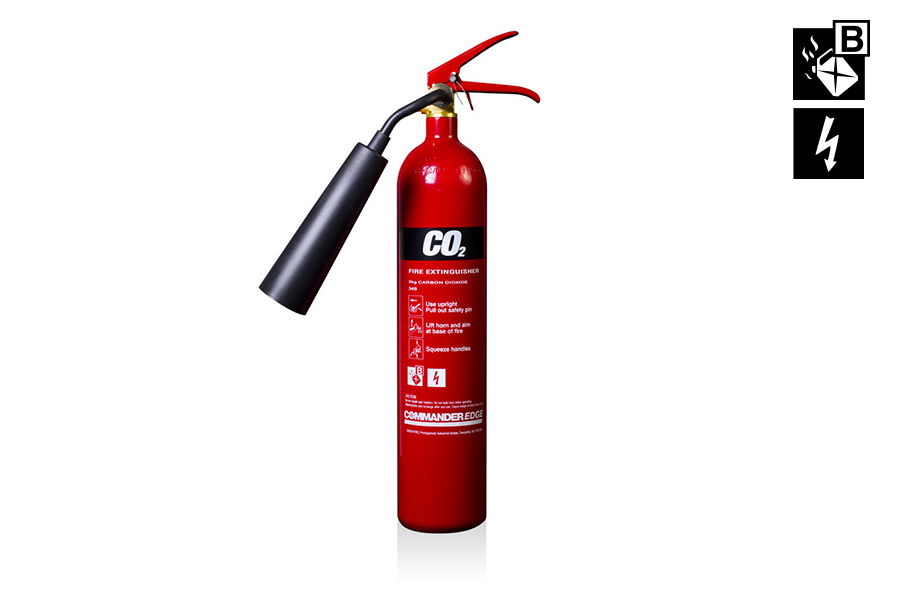 | Carbon Dioxide Fire Extinguisher: Carbon Dioxide (CO2) Fire Extinguishers Best for: Electrical fires and Class B fires involving flammable liquids. CO2 extinguishers discharge carbon dioxide gas to suffocate the fire. They are clean, leave no residue, and are safe for electrical equipment. When to Use: Fires in server rooms, electrical panels, and areas with flammable liquids. When NOT to Use: Fires involving cooking oil or solid combustibles. Ideal Environments: Data centers, offices, commercial kitchens, and areas with delicate electronics. |
| Multi-Chem Fire Extinguisher: Multi-Chemical (MultiCHEM) Fire Extinguishers Best for: Class A, B, and F fires — particularly large surface fires and deep fat fryers. MultiCHEM extinguishers offer a high-performance fire safety solution. They combine features to handle solid combustibles, flammable liquids, and cooking oils. With high ratings across multiple fire classes, they reduce the need for multiple extinguishers. When to Use: Fires involving flammable solids, flammable liquids, and hot oils up to 75 liters. When NOT to Use: Environments where clean residue is essential (e.g., server rooms). Ideal Environments: Professional kitchens, large canteens, food factories, and fuel storage areas. | 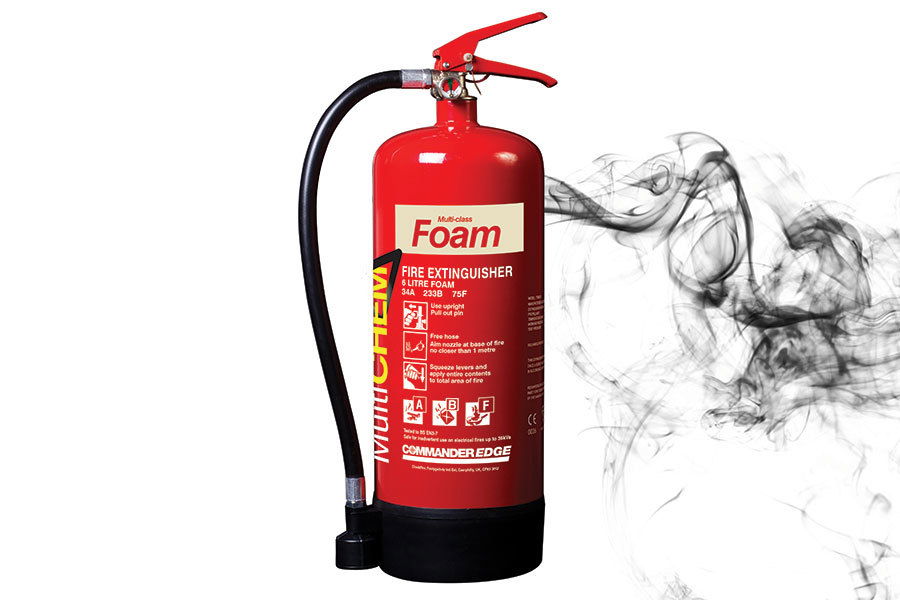 |
Important Fire Extinguisher Buying Tip
When selecting extinguishers, avoid models that have proprietary replacement parts. These can lead to increased service costs and limited supplier availability. Instead, opt for units with widely available parts, high-quality certification (such as Kitemark or BS EN3), and minimal long-term servicing costs.
Summary Table
| Type | Suitable Fire Classes | Best For | Avoid Use On |
|---|---|---|---|
| Water | A | Paper, wood, textiles | Electrical, flammable liquids, cooking oils |
| Foam | A, B | Flammable solids and liquids | Cooking oils, unless rated |
| Dry Powder | A, B, C, Electrical <1000v | Multiple risk areas including flammable gases and fuels | Deep fat fryers, sensitive electronics |
| CO2 | B, Electrical | Electrical equipment, petrol fires | Cooking oils, flammable solids |
| Multi-CHEM | A, B, F | Large fires, kitchens, flammable liquids and oils | Areas requiring residue-free clean-up |


